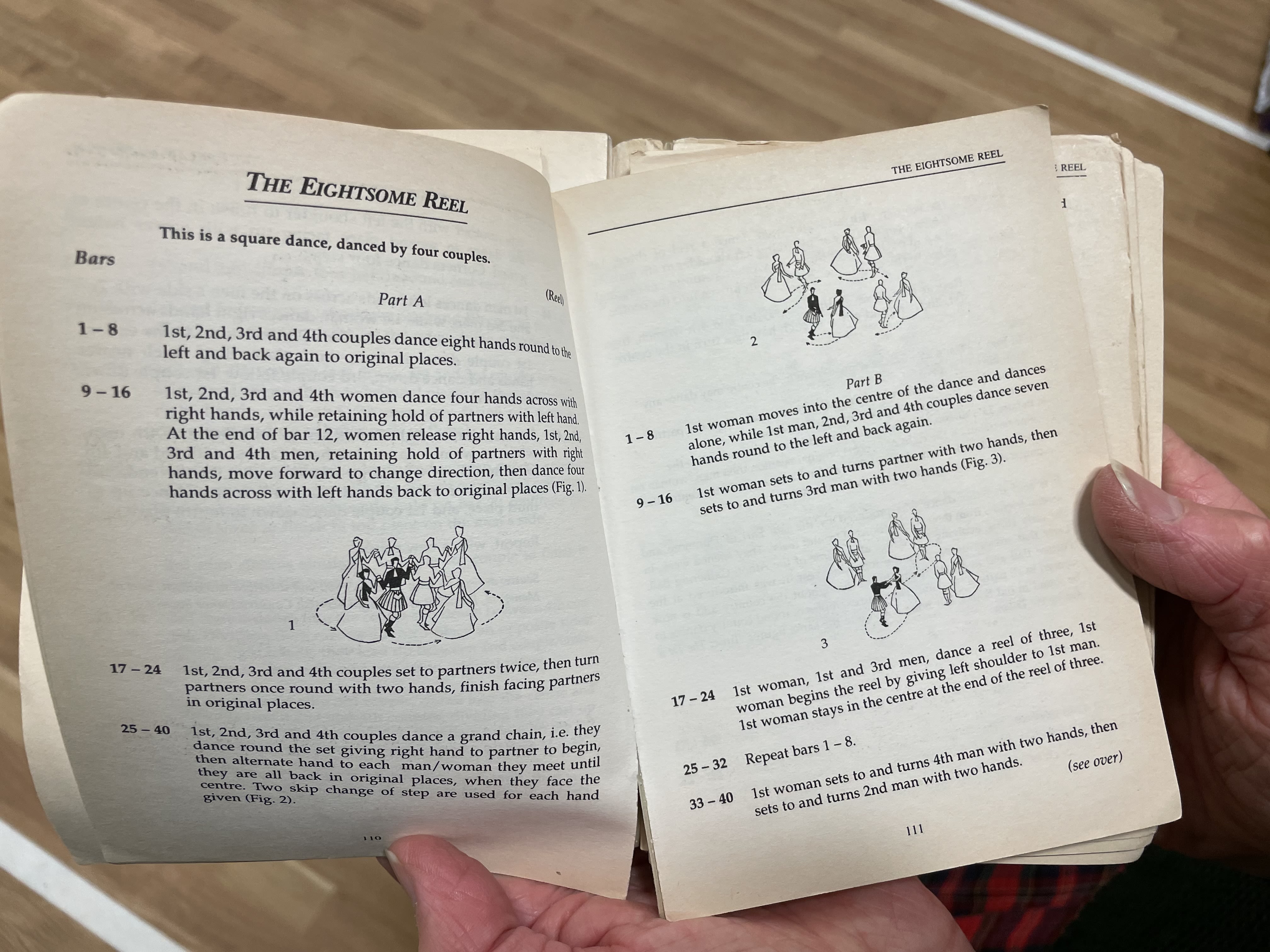SCOTTISH REELING
A surge in popularity in South West London
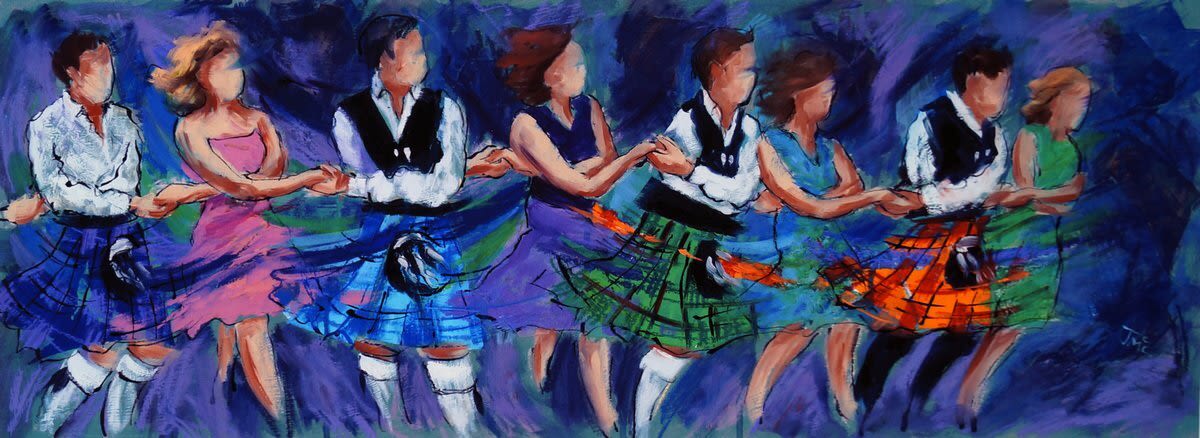
The Up and Coming Out of Fashion Dance
Marked by circular moves and gliding steps, usually set to a 4/4 time, Scottish Reels are a subset of the most lively and popular Scottish country dances. Fluctuating in popularity since their formal inception in the 18th Century, reeling is once again undergoing an extraordinary resurgence in London.
Scottish reeling can broadly be described as a fusion of English country dance and French line dancing, set to Highland music and footwork. It was Marie de Guise who first brought French dance over from the continent when she married James V of Scotland in 1538. Her daughter and heir, Mary Queen of Scots, continued the tradition, yet the Protestant Reformation and its puritanical clampdown delayed any sort of widespread uptake.
Nevertheless, reeling survived in the 17th Century cultural wilderness, rising in acclaim by the end of the century until the 1724 publication of Scottish dance tunes by John and William Neal set formalisation in motion. Buoyed by the Jacobite uprising, soldiers returning home from the Napoleonic Wars, and Queen Victoria’s endorsement, Scottish reeling became the vogue by the turn of the 20th century, especially in military circles.
Although the popularity of reeling in Scotland has remained steadfast, the emergence of post-WW1 Charleston dance marked the beginning of what seemed to be a steady decline for reeling in England. In 1923, the Scottish Country Dance Society was founded in part to guard against this, yet Swing, Jitterbug, Boogie Woogie, Jive and Samba found fertile ground in England, resigning ballroom to the backseat.
But has reeling once again stood the test of time in London?

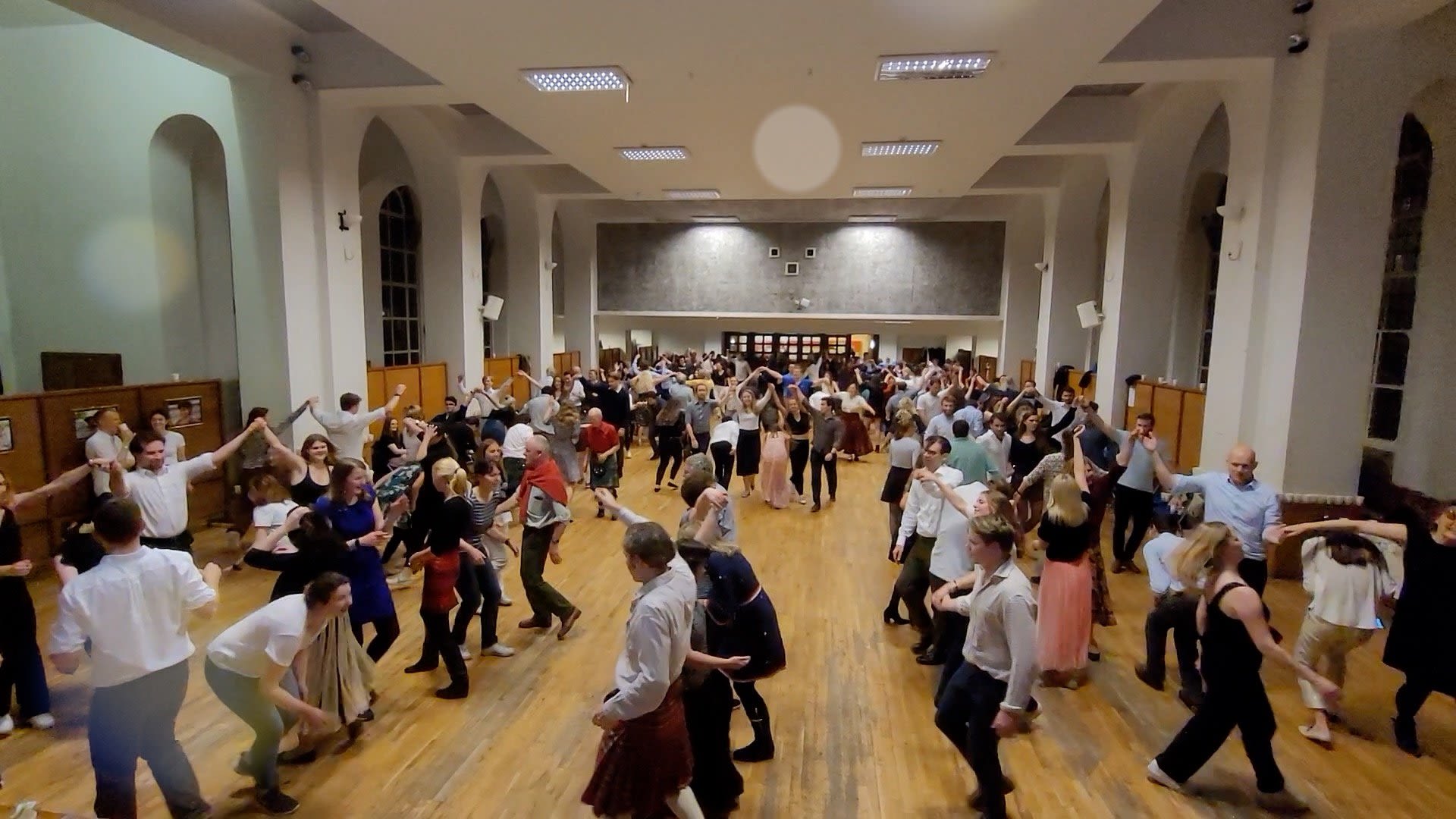
London Scottish
It is not that new reeling clubs have formed in London, but rather long-standing clubs are seeing attendance rates soar.
London Reels celebrated its 50 year anniversary in 2022. With a capacity of around 300 at its venue, St. Columba’s Church, London Reels regularly attracts the largest attendances and has become so popular that it has had to start turning people away.
There are other successful reeling providers in the area, such as Parsons Green Teaching (SW3 3AP), St. Columba's Dancers (SW1X 0BD), and the Lansdowne Club (W1J 5JD), yet London Reels has fast become the prevailing haunt for daunted beginners and seasoned pros alike.
Reflecting on London Reels' broad appeal, committee member, Angus Kincaid, touted the organisation's educational credentials, describing how it succeeds through being "incredibly inclusive due to the fact that it provides teaching and then a social event within the same night."
Another asset is the wonderful community spirit, from gentle pointers in the right direction for disorientated reelers to post-reeling refreshments at the nearby Bunch of Grapes in Knightsbridge.
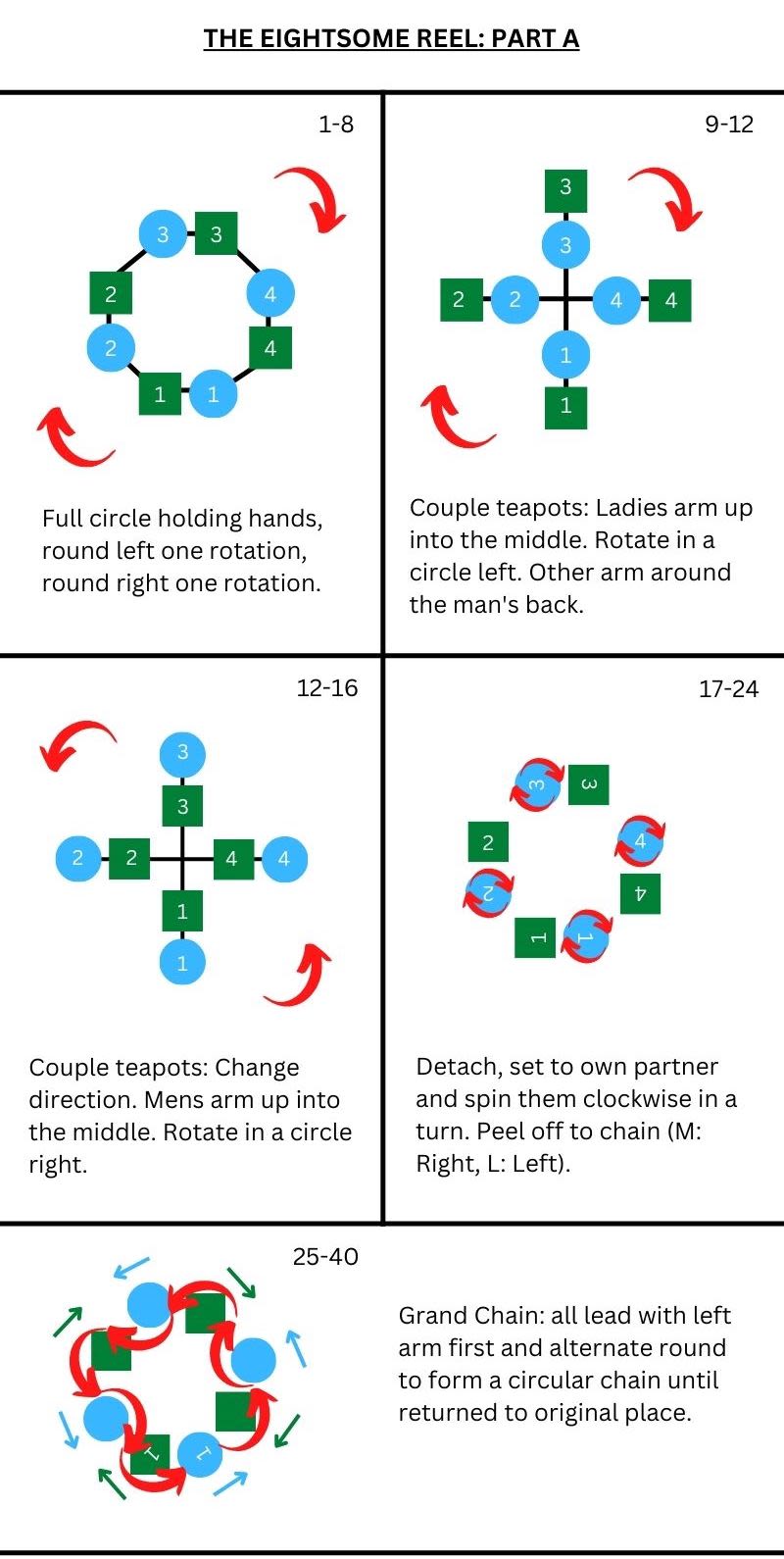
Key: Green men, blue women
Key: Green men, blue women
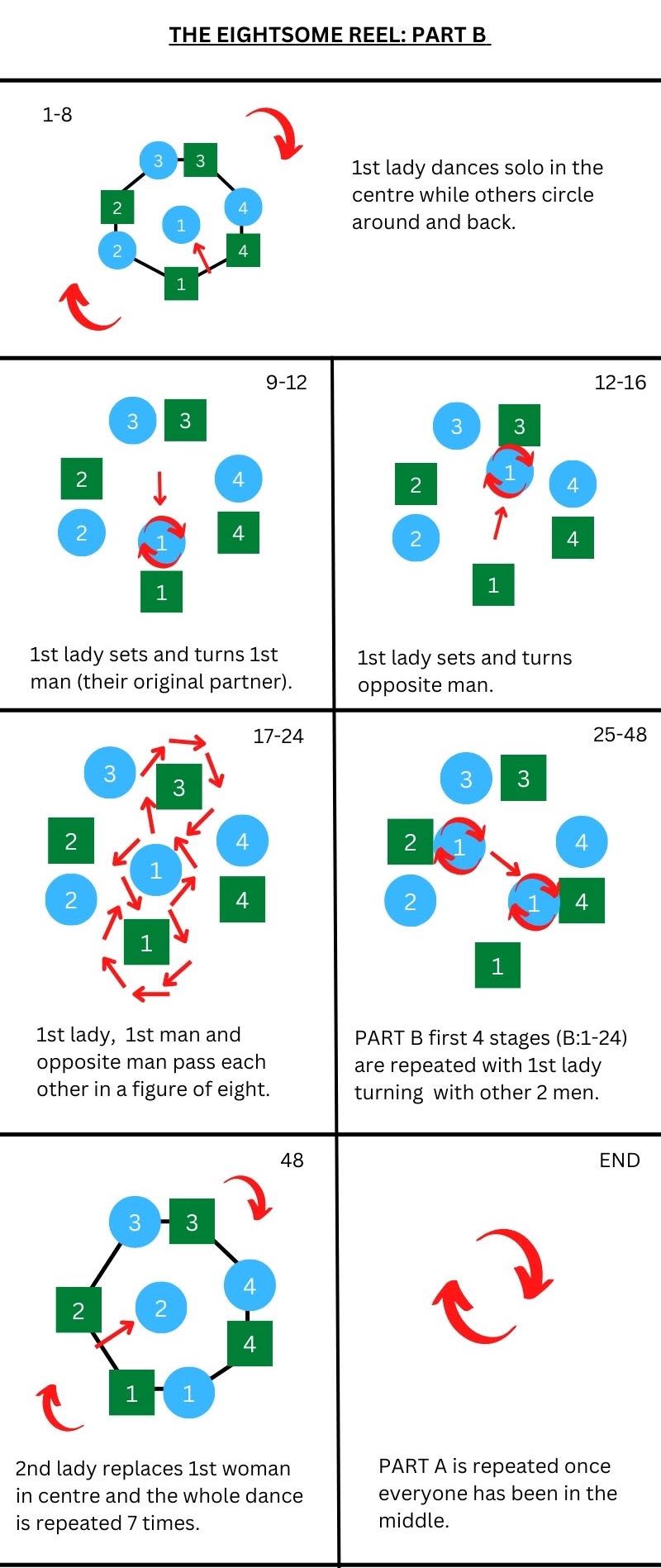
Key: Green men, blue women
Key: Green men, blue women
The jig economy - where reeling sits in SCD
There are 11,000 Scottish country dances on record, including reels, ceilidhs, jigs, rants, and strathspeys. However, there are only 10 to 12 dances that are commonly classified as reels. These include the most familiar cavorts of the Dashing White Sergeant, Reel of the 51st Division, Duke of Perth and the Eightsome Reel (see dance crib left).
Willie Lawrence, convenor of the St. Columba’s Dancers - a group that reels at the same venue as London Reels - explained: “Reeling is a little more robust, by its very nature, has a core repertoire of around a dozen dances, is easy to pick up and tends to appeal to a younger demographic”, while “Scottish country dancers are, on average, a little older and have a wider repertoire of dances using a greater range of steps and formations.”
Large Scottish dance events, such as the Caledonian, Angus and Ghillies Balls, tend to lean on these reels in their selection. This makes participation more accessible and, as Angus Kincaid points out, can facilitate greater self expression. Where reeling forgives greater embellishment on the dances, such as incorporating overhead turns and pretzels, formations become a framework to build on rather than a strict set of steps to abide by.
Rosemary Coupe, in their 'History of the Eightsome Reel' essay, labels the Eightsome as likely the favourite Scottish dance from 1900 to 1960, for it was "perceived as emblematic of the robust energy of the Scottish character." The reel, according to Coupe, "gives the perfect opportunity for the individual display of dancing prowess contained within a communal dance."
The Eightsome is also disproportionately used for popular culture reeling references, such as in Indiscreet (1958) and Four Weddings and a Funeral (1994), as well as in a famous video of the Royal Family at the Ghillies Ball in 1990.
Wimbledon Ceilidh-ing the way?
Wimbledon Reels meets regularly in the Mansel Centre of Trinity Church. While their attendance averages around 30 to 45, the group aims to provide a more advanced reeling experience with a broader selection of Scottish country dance.
Here, it was heartening to find another community merry and content. Elizabeth Scharinger, Trinity Administrator, described a “very good relationship” between the reeling group and the church, while the group's founder, Andrew Hudson, optimistically foretold a "great future" for reeling.
The slightly older set, though still brimming with verve, sauntered through the complex moves at a more leisurely pace. They remained patient and helpful to novices and spoke cheerfully over mince pies and mulled wine during the half time break.
Pipes, bellows and fiddle - the music
An MC leads attendees at Wimbledon Reels and on the occasion I attended dances were performed to the backing track of Chris Oxtoby’ accordion.
Oxtoby tours the South of England with her band Strathallan, playing at least once a week.
The accordion - a portable wind instrument that produces sound as wind is forced past free reeds by means of hand-operated bellows and keyboard - joins the bagpipes and the fiddle as the traditional instruments accompanying Scottish reels. Oxtoby's Strathallan also features the fiddle.
Occasionally, such as at certain London Reels events, a band plays a modern take on the reels with guitar and drums.
Each subset of Scottish country dance carries its own tune and tempo. Reels and rants are usually in 4/4, but a rant is taken slower than a reel with a stress on the third beat of the bar. A strathspey is in 4/4 with dotted rhythms and Scotch snaps, while jigs are usually 6/8.
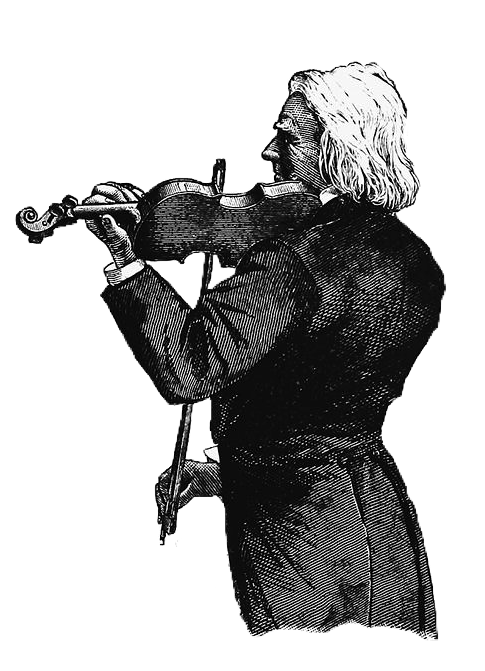

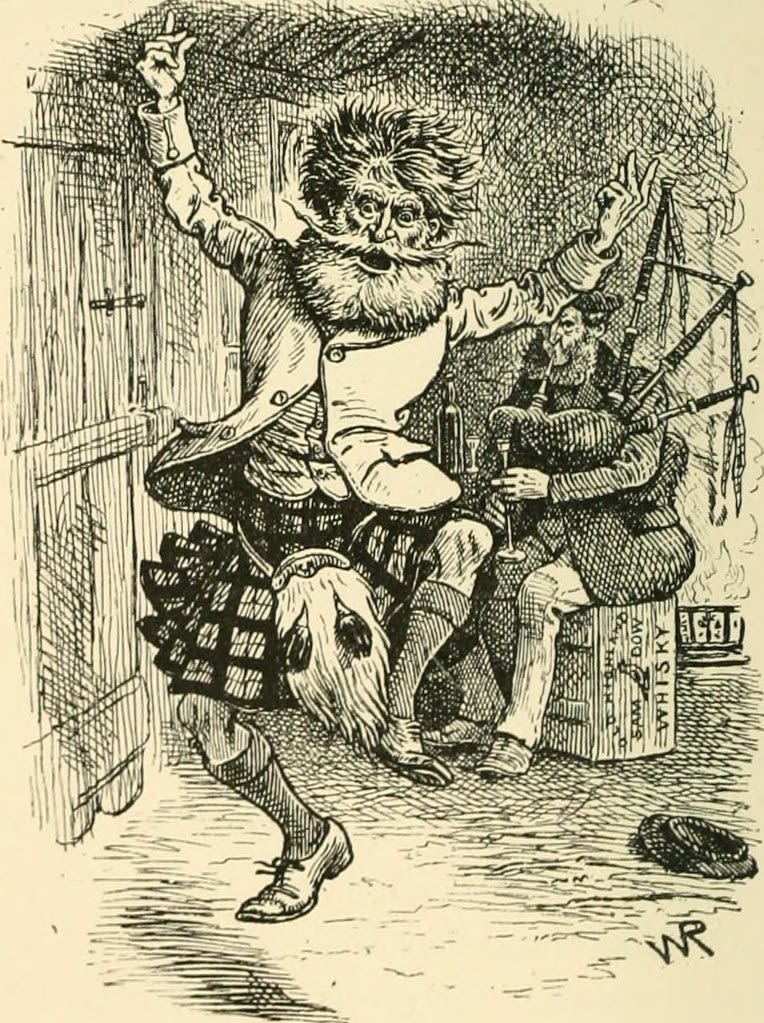
Photo by Sandie Peters on Unsplash
Photo by Sandie Peters on Unsplash
Should you need any more encouragement to give reeling a go, Willie Lawrence describes Scottish country dance as "an excellent way to keep fit, physically and intellectually, and provides wonderful social interaction.”
The map below outlines reeling locations in South West London, complete with price and schedule. With Burns Night coming up, there has never been a better time to pick up reeling. The Scottish Country Dancing Dictionary website has everything you need to prepare. Traditionally, a ball begins with the Dashing White Sergeant. Careful with your over or unders! And remember to get down early because reeling is well on its way to becoming the hottest ticket in town once more.
Thank you to all those who contributed to this piece. See you at practice!
Additional picture credits:
Painting of Dancers: London Reels
Screenshots from videos provided by London Reels.
St. Columba's Church: Buildington
The Fiddler: The British Library, Rawpixel
The Piper: Credit: Clker-Free-Vector-Images, Pixabay
The Dancer: Image from page 133 of "Legal and other lyrics; with explantory notes and a glossary" (1888). Credit: Internet Archive Book Images, Flickr
Fair Dealing Film Footage:
Indiscreet/Grandon Productions/Stanley Donan/1958
Four Weddings and a Funeral/PolyGram Filmed Entertainment/Channel 4 Films/Working Title Films/Mike Newell/1994
Braveheart/Icon Productions/The Ladd Company/Mel Gibson/1995
AntPDC/YouTube/2021
